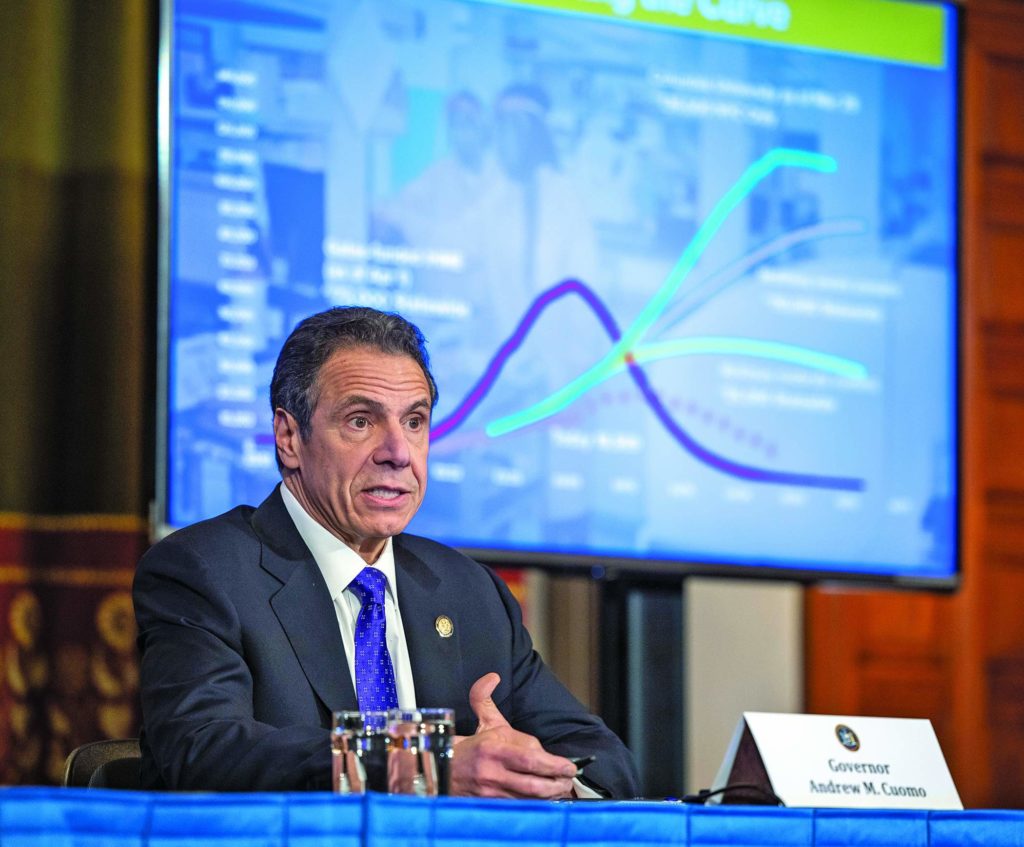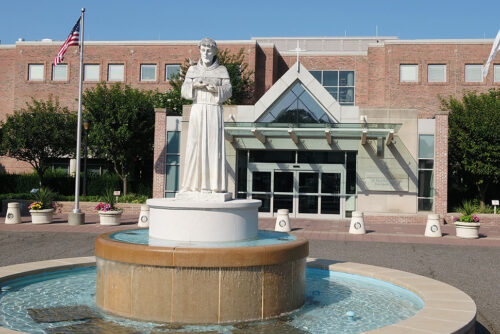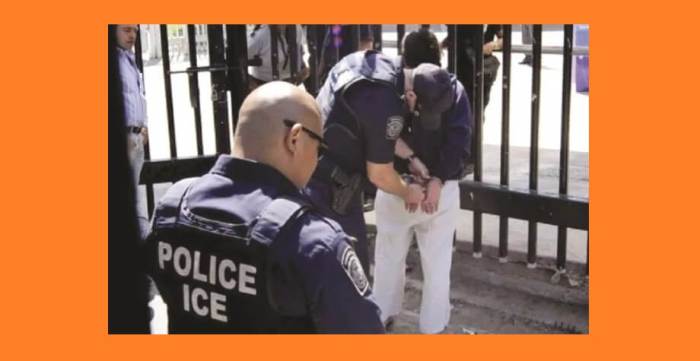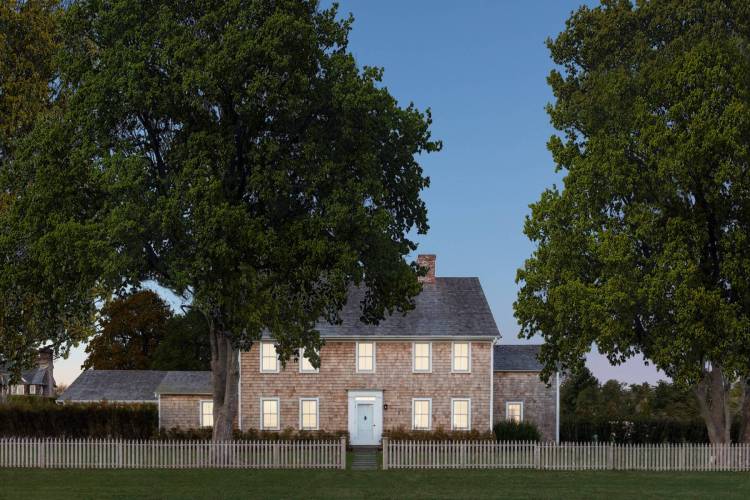
New York State Governor Andrew Cuomo has garnered a wealth of praise across the nation for his leadership in the state’s effort to fight the spread of coronavirus and muster resources to treat the infected.
New York has been hit harder by COVID-19 than any other state in the country, with more than 90,000 confirmed cases and more than 8,000 confirmed deaths from the illness. But the governor’s matter-of-fact recounting of the state’s situation, along with numerous initiatives aimed at promoting social distancing and increasing testing capacity, among others, have bolstered his political capital significantly.
A March poll by Siena College found that Cuomo’s approval rating among the state’s registered voters is up to 71 percent, skyrocketing from the 44-percent rating he had in Siena’s February poll. When asked specifically about coronavirus, 87 percent of respondents approved of the governor’s handling of the pandemic.
Social media live streams of Cuomo’s daily press conferences, now being broadcast by the celebrity magazine People, as well as state news outlets, are inundated with comments from people asking him to run for president, a call that gained enough steam, forcing him to explicitly state he had no plans to do so during an interview with his brother Chris Cuomo on CNN.
But as the governor continued to earn high marks the nation over, he also helped to champion the passage of a state budget whose cuts have left many activists and Democrats in the state legislature feeling betrayed.
“Our public health system, our hospitals, our schools and our housing have been underfunded for years and years, leaving us more vulnerable to this crisis than need be,” New York State Assemblywoman Yuh-Line Niou said on the floor of the assembly during the budget vote. “Now in this moment, we are being asked to respond to decades of shortfall by cutting more, even as we know that the needs will be greater than ever before.”
The state’s $177 billion budget, approved by both houses of the state legislature and signed by the governor earlier this month, attempts to close a $6 billion budget gap with cuts to numerous areas, including healthcare spending. Among the cuts are a $2.5 billion reduction to state Medicaid spending that includes $400 million in cuts to state hospitals.
Though the proposal to make up for the budget shortfall through cuts in health care spending, which Cuomo has defended several times by saying “we have no money,” has been circulating for months, realizing the cuts in the midst of a pandemic that has killed more New Yorkers than the September 11th attacks has prompted backlash from many state democrats.
A group of assemblyman and state senators representing districts in Brooklyn, where hospitals in the area will lose about $38 million in funding, wrote a letter to the governor on the eve of the vote in which they called the proposed cuts “cruel, inhumane and unacceptable.”
“New York is the global epicenter of the COVID-19 pandemic,” the letter reads. “These hospitals disproportionately serve the most vulnerable in the epicenter; including the poor, the elderly and those suffering from comorbidities. As the representatives of these hospitals and those they serve, we cannot accept these proposed cuts.”
Niou echoed these sentiments on the floor of the assembly, calling the cuts an unacceptable result of a years-long process of cuts to the state health care infrastructure that had already left New York worse prepared to deal with the current crisis.
“I don’t understand how we can think this is a right policy when we look at our communities and see the abject suffering and fear happening right now because we don’t have enough hospital beds, we don’t have enough PPEs and nurses and doctors,” she said.
“People are literally dying in the halls of our public hospitals because they simply don’t have the capacity, a direct result of years of cutting funding. Cutting Medicaid in any other year means that New Yorkers suffer, but this year cutting Medicaid means that a lot of people will die.”
In further efforts to reduce the state’s budgetary shortfall, Cuomo issued an executive order on Thursday, April 9 using the powers granted to him during the ongoing state of emergency to enact a 90-day wage increase delay for public employees in the state.
Among the workers that will be affected by the cuts are all the workers of the Civil Service Employees Administration (CSEA), whose workers include the non-medical staff of Stony Brook University Hospital as well as all the workers at Nassau University Medical Center, which is currently the county’s main hub for dealing with COVID-19 cases. Cuomo called the freeze necessary to avoid layoffs, but CSEA President Mary Sullivan called it “inexcusable.”
“It’s inexcusable to require our workers to literally face death to ensure the state keeps running and then turn around and deny those very workers their much-deserved raise in this time of crisis,” Sullivan said. “People are failing to recognize the value of our state workers during this crisis and what they are going through to keep providing public services throughout the state. We literally have workers sleeping in their workplaces to make sure essential services are delivered around the clock. They’re at the front lines keeping this epidemic from spreading further, caring for our most vulnerable and ill residents, helping people in our communities suffering from job losses and keeping our state from wholesale economic and social collapse. We cannot value them enough right now.”































